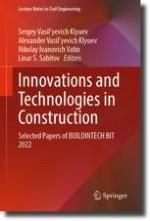This book gathers the latest advances, innovations, and applications in the field of building design and construction, as presented by researchers and engineers at the International Conference BUILDINTECH BIT 2022, Innovations and Technologies in Construction, held in Belgorod, Russia, on March 9-10, 2022. It covers highly diverse topics, including building materials, industrial and civil construction, structural mechanics and theory of structures, computational methods and IT in construction, organization and technologies of construction production. The contributions, which were selected by means of a rigorous international peer-review process, highlight numerous exciting ideas that will spur novel research directions and foster multidisciplinary collaborations.
